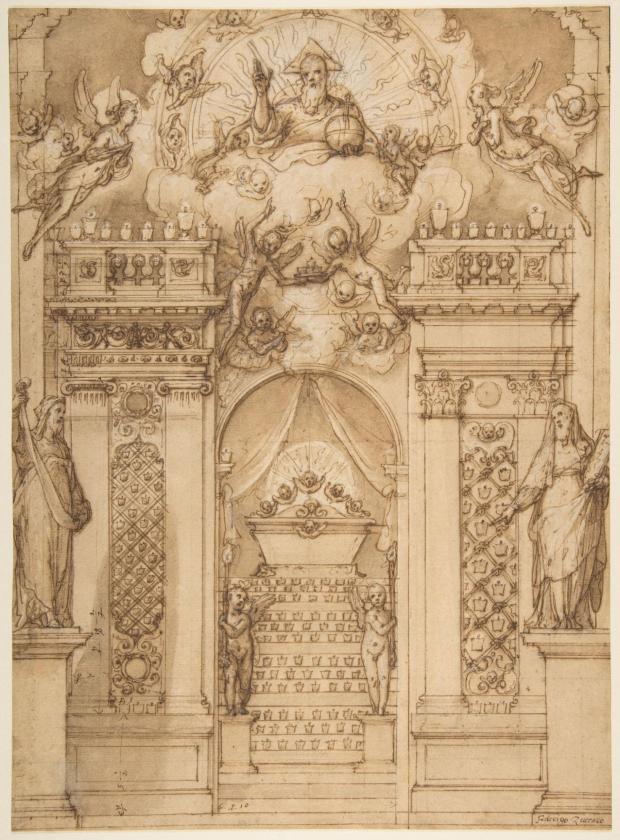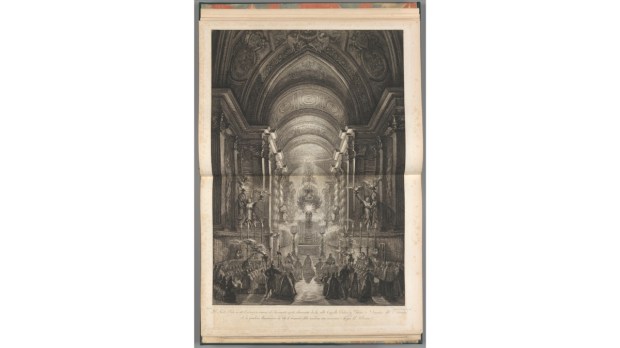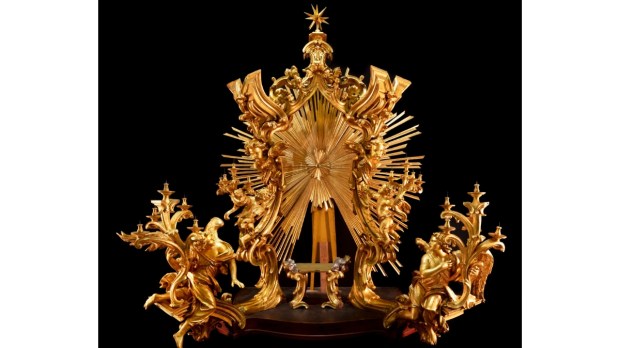"A great many candles": This was the detail that struck writer Charles Dickens as he attempted to attend the pontifical ceremonies of Holy Thursday at the Vatican in 1845. Caught in the middle of a dense, half-lit crowd, the Anglican could only catch a glimpse of an unusual scene — the illumination of the Pauline Chapel in the heart of the Vatican Palace — before the door was shut in his face.

What he had just seen was in fact a "machine of the 40 Hours," a liturgical apparatus that is now forgotten. In the 16th century, Protestant currents radically rejected the dogma of transubstantiation, and thus the Real Presence of Christ in the host. In response, the Catholic "Counter-Reformation" worked actively to promote the Eucharist. It was against this backdrop that the ceremony of the 40 Hours flourished.
The forty hours of Christ's death
Originating in Tuscany and imported to Rome by St. Philip Neri, this devotion centered on adoration of the Blessed Sacrament. Pope Gregory XV officially established it in 1592 with the bull Graves et diuturnae. (The Jesuit tradition of the 40Hours is more flamboyant than the more austere and penitential Capuchin tradition.)
This liturgy is based on the tradition that the interval between Christ's death and resurrection was 40 hours — from 3 p.m. on Good Friday to 7 a.m. on Easter Sunday. After an opening Mass, the faithful are invited to take turns for 40 hours to adore the Real Presence of God presented in the host in the monstrance, concluding with another Mass.
Ephemeral and glorifying
To glorify these particularly powerful ceremonies, often celebrated at the beginning or end of Lent, ephemeral installations known as "machines of the 40 Hours" were developed. These richly ornamented and gilded assemblies, with their many candles, were designed to draw all eyes to the Blessed Sacrament at the center of the composition.

These constructions were sometimes used for processions. Of various shapes and sizes, sometimes suspended high above the ground, they often needed to be watched very closely to avoid causing a fire. Later, other types of "Baroque machines" were developed, such as the one in Rome's Church of the Gesù, which uses mechanisms.
Most of the machines of the 40 Hours "disappeared over time," explains Alessandro Rodolfo, head of the Vatican Museums' 17th- and 18th-century art department. The last machine still installed in a Roman church — in the Basilica of Santa Maria dell'Orto — was dismantled in 2022.
A unique model

By chance, a particularly remarkable model of this ornament was found in the Vatican Museums' storerooms. Created by a number of artists, including Bernini, it is thought to have been used in the Pauline Chapel — the very chapel of which Charles Dickens could only catch a glimpse — before being removed.
Four candelabra represent the 40 hours, and the structure is adorned with statues of prophets, angels, torches, lace, and peacock feathers. The ensemble was installed above the altar in a church plunged into shadows, accompanied by music and incense to "involve all the senses," explains Alessandro Rodolfo.
At the center of this glittering decor was the consecrated host, which was the focus of the lights to evoke the divine light of Easter. "It's a machine of gold, made to shine, designed to emanate the light of the final resurrection," says the director of the Vatican Museums, who has announced her wish to integrate this work into the permanent collection.










